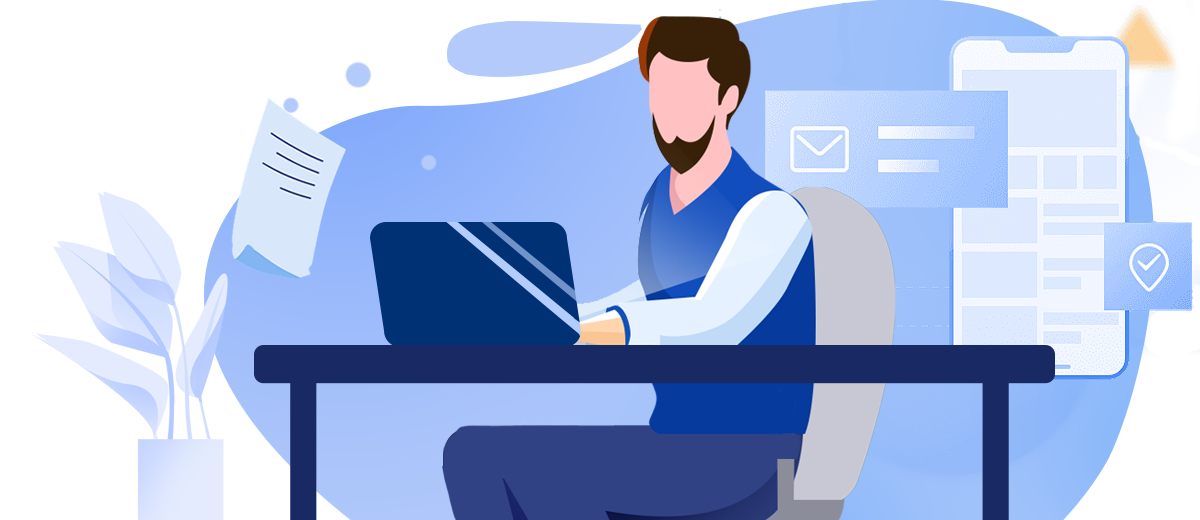In today's digital age, data leaks have become an increasingly serious concern for individuals and organizations alike. But what exactly is a data leak, and why should you care? This article will help you understand the risks and protect yourself from potential data breaches.
What is a Data Leak?
A data leak occurs when sensitive, confidential, or protected information is accidentally or intentionally released into an unsecured environment. This can include personal information, financial data, business secrets, or government documents. Every year, millions of people worldwide fall victim to data leaks, resulting in significant financial losses and privacy breaches.
What are The Impacts of Data Leaks?
Data leaks can have devastating consequences:
- Financial Loss: Victims may face direct monetary losses through fraud or theft.
- Identity Theft: Stolen personal information can be used to create fake identities.
- Reputation Damage: Organizations can suffer severe reputation damage after a breach.
- Legal Consequences: Companies may face lawsuits and regulatory fines.
- Emotional Stress: Victims often experience anxiety and stress after their data is exposed.

What are Common Targets of Data Leaks?
While large corporations are primary targets due to their vast data repositories, anyone can become a victim. Here's who's most at risk:
1. Large Companies
These organizations store massive amounts of valuable user data, making them attractive targets. Their databases often contain:
- Customer personal information
- Financial records
- Login credentials
- Credit card details
2. Healthcare Providers
Medical institutions handle sensitive patient information, including:
- Medical histories
- Insurance information
- Personal identification data
- Payment records
3. Government Agencies
Government bodies store critical data such as:
- Citizen personal information
- National security details
- Financial records
- Infrastructure data
In recent years, several large-scale data breaches have occurred. For example, in 2021, Facebook experienced a leak of personal information affecting over 530 million users. Similarly, LinkedIn suffered a data breach that exposed the information of approximately 700 million users. As a result of these incidents, the affected users may be at risk of identity theft and phishing attacks.

What are the Main Causes of Data Leak?
Understanding how data leaks occur is crucial for prevention. Here are the main causes:
- Lost or stolen credentials: The simplest method to view private data online is by using someone else's login credentials to access a service. To achieve this, attackers employ various strategies to obtain people's usernames and passwords.These include brute force attacks and on-path attacks.
- Lost or stolen equipment: A lost computer or smartphone that contains confidential information can be very dangerous if it falls into the wrong hands.
- Social engineering attacks: Social engineering attacks refer to manipulating people's psychology to trick them into revealing sensitive information. For example, an attacker might impersonate an IRS agent and call a victim, attempting to persuade them to disclose their bank account details.
- Insider threats: Internal threats occur when individuals with authorized access to protected information deliberately leak relevant data, often for personal gain. For example, a restaurant server might copy a customer's credit card number, or a senior government employee might sell classified information to other countries.
- Exploitation of vulnerabilities: Almost every company in the world uses various software products. Due to the complexity of software, it often contains defects known as "vulnerabilities." Attackers can exploit these vulnerabilities to gain unauthorized access and view or copy confidential data.
- Malware infections: Many malware programs are designed to steal data or track user activities, sending the collected information to servers controlled by attackers.
- Point-of-sale attacks: These attacks aim to obtain credit and debit card information, most commonly by using devices to scan and read these cards. For example, someone might install a fake ATM or even attach a scanner to a legitimate ATM to collect card numbers and PINs.
- Credential stuffing: After a user's login credentials are exposed in a data leak, attackers may attempt to use those credentials to log into many other platforms. If the user employs the same username and password across multiple services, attackers could gain access to the victim's email, social media, and/or online banking accounts.
- Lack of encryption: If a website that collects personal or financial data does not use SSL/TLS encryption, anyone can monitor the transmission between the user and the site, viewing the data in plaintext.
- Misconfigured web applications or servers: If a website, application, or web server is not set up correctly, it may expose data to anyone with an internet connection. Users who inadvertently discover confidential data or attackers intentionally searching for it may be able to access this information.
How Can Businesses Prevent Data Leaks?
Due to the various forms of data leaks, there is no one-size-fits-all solution; a holistic approach is necessary. Key steps businesses can take include:
- Access Control: Employers can prevent data leaks by ensuring employees have the minimum access rights necessary to perform their jobs.
- Encryption: Businesses should use SSL/TLS encryption for their websites and any incoming data. They should also encrypt static data stored on servers or employee devices.
- Web Security Solutions: Web Application Firewalls (WAF) can protect businesses from various application attacks and exploits aimed at causing data leaks.
- Cybersecurity: In addition to protecting web assets, businesses must secure their internal networks from attacks. Solutions like firewalls, DDoS Protection, secure web gateways, and Data Loss Prevention (DLP) can help ensure network security.
- Keeping Software and Hardware Updated: Outdated software poses significant risks. Such software often contains vulnerabilities that attackers can exploit to gain access to sensitive data. Vendors regularly release security patches or new versions to address these vulnerabilities. If updates are not installed, it can allow attackers to breach systems. Over time, vendors may stop supporting outdated software, leaving it exposed to newly discovered vulnerabilities.
- Preparedness: Companies should develop response plans to execute in the event of a data leak to minimize or contain information leaks. For example, they should maintain backup copies of critical databases.
- Training: Social engineering is one of the most common causes of data leaks. Training employees to recognize and respond to social engineering attacks is crucial.
How Can Individuals Prevent Data Leaks?
Here are some tips for protecting data:
- Use Unique Passwords for Each Service: Many users reuse passwords across multiple online services. This means that if one service suffers a data leak, attackers can use those credentials to access other accounts.
- Use Two-Factor Authentication (2FA): 2FA requires more than one method to verify a user’s identity before allowing login. A common form is requiring a unique one-time code sent to the user's phone in addition to their password. Users with 2FA are less likely to be affected by data leaks involving leaked credentials, as their password alone is insufficient for attackers to access their accounts.
- Submit Personal Information Only on HTTPS Websites: Websites lacking SSL encryption will have a URL beginning with "http://" instead of "https://". Non-encrypted sites expose any data entered, including usernames, passwords, search queries, and credit card numbers.
- Keep Software and Hardware Updated: This advice applies to both users and businesses.
- Encrypt Hard Drives: If a user’s device is stolen, encryption prevents attackers from viewing files stored locally on that device. However, it does not stop attackers from accessing the device remotely via malware or other methods.
- Only Install Applications from Trusted Sources and Open Files from Reliable Sources: Users often accidentally download and install malware. Ensure that any files or applications downloaded, opened, or installed are from legitimate sources. Additionally, avoid opening unexpected email attachments, as attackers often disguise malware in seemingly harmless emails.
In the event of a suspected data leak, it's essential to act quickly. Start by changing your passwords, monitoring your financial accounts, and contacting the relevant authorities.
Conclusion
Data leaks represent a significant threat in our digital world. By understanding the risks and implementing proper security measures, both organizations and individuals can better protect their sensitive information. Stay vigilant, keep security measures updated, and always prioritize data protection in your digital activities.
Tencent EdgeOne implements several key features to mitigate the risk of data breaches for both enterprises and individuals:
- Private Network Origin-Pull: By performing origin-pull over a private network, EdgeOne ensures that the business origin server is shielded from direct attacks. This secure method of data retrieval helps prevent unauthorized access and potential data breaches.
- DDoS Protection: Utilizing dedicated high-bandwidth lines, EdgeOne effectively prevents Distributed Denial of Service (DDoS) flood attacks, ensuring that services remain uninterrupted and protected from malicious traffic that could lead to data breaches.
- Bot/Crawler Prevention: EdgeOne comes with bot and crawler prevention features that analyze suspicious traffic patterns. By providing specific prevention suggestions, it protects websites from automated bots and crawlers that may seek to exploit vulnerabilities, thereby reducing the risk of data exposure.
We have now launched a Free Trial, welcome to Sign Up or Contact Us for more information.

